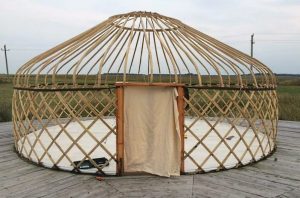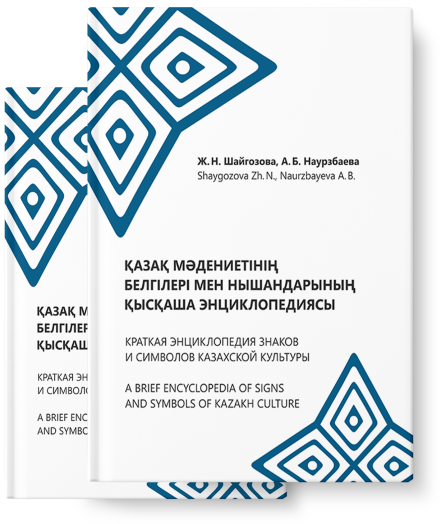
A short encyclopedia of
Signs and symbols of
Kazakh culture

The main frame of the yurt, consisting of individual lattices – qanat, Kazakhs call it “kerege”. Functionally, the individual parts (ropes) are connected into a single structure – the kerege – the skeleton of the yurt. In semiotics, the walls of a house are a boundary, a barrier from the outside world, chaos, i.e. protection. In the yurt, entrance (door) and shanyraq (smoke outlet) regulate the establishment of communication with the outside world, then the kerege appears as a symbolically designated “avoiding” entrance-exit. This is manifested in the ritual practice, for example, funeral: with frequent deaths in a house (yurt), the deceased were carried out by dismantling one of the parts of the kerege.
The symbolic meaning of kerege in Kazakh culture is found in the words of benevolent wedding ceremonies, “Shanyrağyn biik bolsyn, keregen keñ bolsin!” (May your shanyraq be high and your keregen be wide!). The use of the word “keñ” (wide) means spacious, room for many people, guests, happiness, prosperity, etc.
Qanat (a separate part of the grid, its literal translation “wings”) as part of a common kerege, carries the meaning of cohesion, unity (in the sense of family, related), support, and kerege – stability, solid base.

